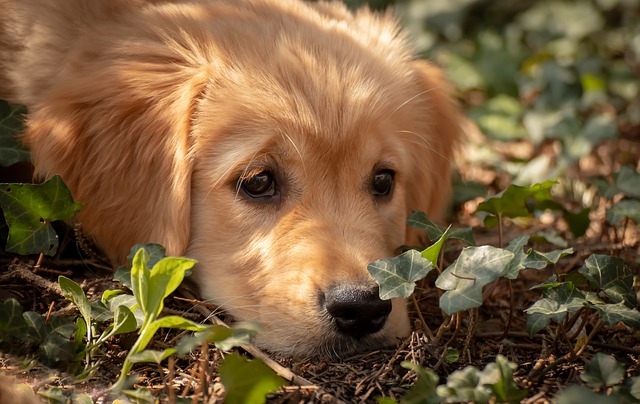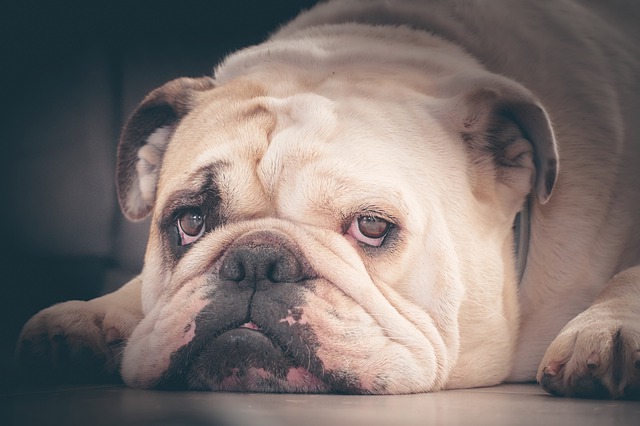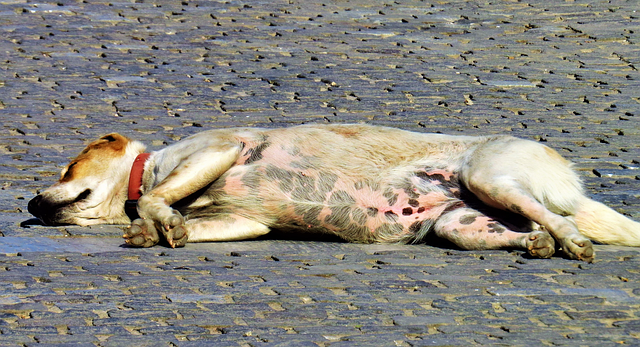We all know that what we feed our dogs can affect their coat and skin. That’s why we often see dog food products that advertise “coat and skin health.” However, even the best commercial dog foods can’t provide the right balance of nutrients for every dog out there – especially those with allergies or sensitive skin. Knowing how your dog’s food can affect their skin will help you identify problems and get them fixed faster with the help of your veterinarian.
Linda Kajda, author of “Natural Dog Cures for Dog Skin Problems,” provided us with a list of 10 ways dog food affects dog skin.
“It’s important to understand the circumstances that can cause problems and how to best avoid your dog from being uncomfortable and miserable,” Kajda says. “After all, they are your best friend!”
Related: 13 Best Skin & Coat Supplements for Dogs
#1 – Dehydrating Skin
Commercial dry dog food has a dehydrating effect on a dog’s skin and hair. It stimulates an increase in thirst, which compensates for the dryness of a dry food diet. A simple solution is to add a little chicken or beef broth and a good digestive enzyme.

#2 – Red, Irritated, Itchy, Inflamed Skin
Certain ingredients in your dog’s food are likely to cause a dog food allergy, especially in sensitive dogs. These include beef, chicken, pork, fish, eggs, dairy, grain, and several “extras,” including artificial preservatives, additives, and colors. If you think your dog may have food allergies, see our list of the 12 Best Dog Foods For Allergies.

#3 – Hot Spots
Hot spots can be triggered by a change in your dog’s diet to a new dog food. This is a classic response to food intolerance. Incorporating dark green leafy vegetables, Vitamin A and C, Omega 3 and 6, and Chlorella into your dog’s diet will help prevent hot spots from flaring up.

#4 – Protein Deficiency
A lack of protein in a dog’s diet causes changes to the skin and hair coat, including stopping or slowing growth and scaly/greasy skin. Hairs become brittle and break off easily. Novel protein and hydrolyzed diets should be considered as a better option.
Related: The Best Dehydrated Dog Foods Reviewed

#5 – Vitamin Deficiencies
The lack of vitamins in a dog’s food can cause many abnormal skin conditions. Each vitamin is essential for healthy dog skin. The effect vitamins have on dog skin is determined by the vitamin deficiency, each having a different reaction.
Related: Best Dog Food

#6 – Dandruff
A lack of Riboflavin will cause skin inflammation, some itching, and greasy, scaly skin. Since Riboflavin is not stored in the body, it needs to be restored through the diet. Eggs, organ meats, and green vegetables are all rich in Riboflavin.

#7 – Inflamed and Dry Skin From Low Fatty Acids Concentration
Dog food high in Omega 3 and 6 fatty acids will help nourish and protect a dog’s skin. It will prevent dryness and protects against inflammation. Fish oil is an excellent source of Omega 3 and 6. It can also be found and given in capsule form.

#8 – Baldness
Excessive scratching can cause self-induced baldness as a result of an adverse food reaction. Dermatologic food reactions occur after ingestion of an allergy causing substance in the dog’s food.

#9 – Welts
Welts appear as a red, raised, itchy bump on the dog’s skin, often resembling a mosquito bite. Among the many reasons a welt appears is an allergic reaction to foods.

#10 – Hyperpigmentation
This is seen as a darkening and thickening of the skin. It’s a light brown to a black velvety area that can be in many parts of the dog’s body. It is relatively common and appears in breeds prone to food allergies, among other conditions. A food trial can be given to test for allergies.

Many of these issues can be avoided or relieved by a healthy diet. Check out our 10 Best Fresh Dog Food Brands list if you’re thinking of making a switch.
 Toledo, United States.
Toledo, United States.